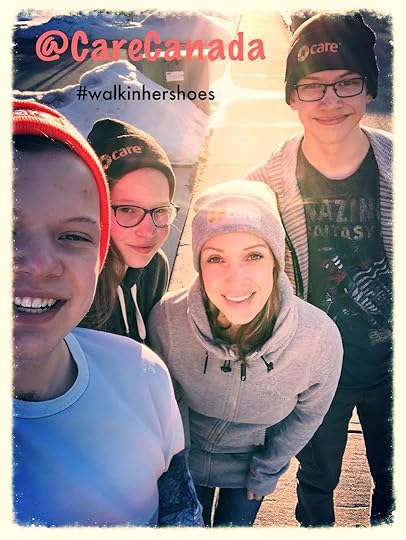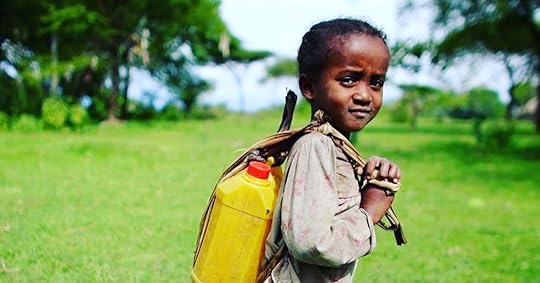Walk in her Shoes
 It's something we do every day without thinking twice: using water. We turn on the tap, wash our hands at the faucet, shower and bathe freely. We prepare meals, clean homes and quench our thirst. In Canada, we have this luxury and often, we take it for granted.In developing nations, getting clean water is a more arduous task. It means walking, usually from a village, to a water source. This may be a very long journey and for some women and children, the trek may be fraught with danger. Furthermore, will the water be clean, safe to drink and use? Care Canada estimates the average walk is around 6km.My Dad, my children and I teamed up this year for the Walk in her Shoes program with Care Canada. During the month of March, Care asks participants to walk 10,000 steps either individually or as a group, to raise awareness and funds for these girls and women. Care Canada has been around for over 70 years, bringing help and resources to the most vulnerable in the world. Having visited Africa myself, I have seen this journey for water firsthand. Leaving the village can be unnerving for young children but water is necessary for daily living. In fact, in every village I was able to visit, I was asked by the children for any water bottle or container I had. Despite the journey in the scorching heat, I never heard anyone complain. In fact, the people were the most grateful I have ever met, despite having so little."I'm H-A-P-P-Y!" (video: Lorelei Bachman)Between trips to the water source, the bottles were happily used for percussion purposes!There is still time to take part. Visit Care.ca for details about virtual walks and tag yourself with #WalkInHerShoes to show your support.
It's something we do every day without thinking twice: using water. We turn on the tap, wash our hands at the faucet, shower and bathe freely. We prepare meals, clean homes and quench our thirst. In Canada, we have this luxury and often, we take it for granted.In developing nations, getting clean water is a more arduous task. It means walking, usually from a village, to a water source. This may be a very long journey and for some women and children, the trek may be fraught with danger. Furthermore, will the water be clean, safe to drink and use? Care Canada estimates the average walk is around 6km.My Dad, my children and I teamed up this year for the Walk in her Shoes program with Care Canada. During the month of March, Care asks participants to walk 10,000 steps either individually or as a group, to raise awareness and funds for these girls and women. Care Canada has been around for over 70 years, bringing help and resources to the most vulnerable in the world. Having visited Africa myself, I have seen this journey for water firsthand. Leaving the village can be unnerving for young children but water is necessary for daily living. In fact, in every village I was able to visit, I was asked by the children for any water bottle or container I had. Despite the journey in the scorching heat, I never heard anyone complain. In fact, the people were the most grateful I have ever met, despite having so little."I'm H-A-P-P-Y!" (video: Lorelei Bachman)Between trips to the water source, the bottles were happily used for percussion purposes!There is still time to take part. Visit Care.ca for details about virtual walks and tag yourself with #WalkInHerShoes to show your support. 
 (Image: Care Canada)
(Image: Care Canada)
Published on March 25, 2018 19:46
No comments have been added yet.



